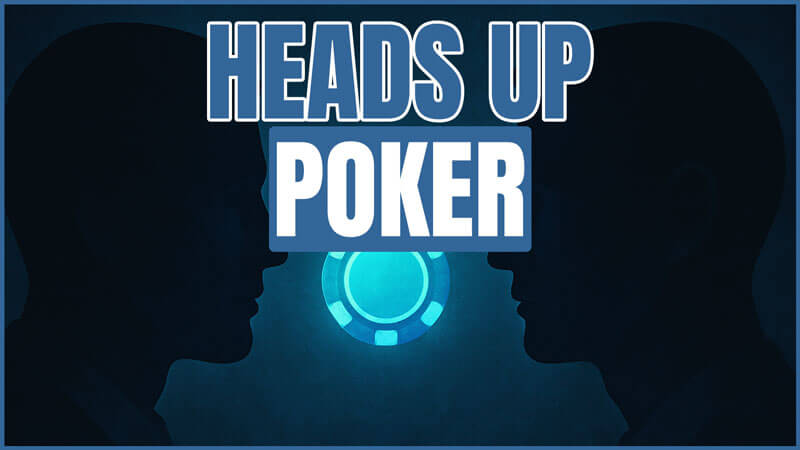Sit and Go Tournaments: Heads Up Strategy
Now you’ve navigated the field, and it’s down to two. You’ve reached the heads-up stage, which typically guarantees a payout of around three times your buy-in. That prize is now secured, and this final stage becomes an all-or-nothing contest to win the additional two buy-ins awarded to the winner.
Playing well heads up usually requires a balanced mix of strategic aggression and well-timed decision-making. Though chance will always play a role in short-handed situations, if you take the aggressive approach, you should find your long term heads up results improve.
Heads up play in the final stage of an SNG is somewhat unfamiliar to many players. Players that usually play cash games rarely play heads up, and even the average sit and go player will only get heads up 20% of the time. If you practice these general rules, you can master heads up play, especially against opponents who rarely get there.
Button (Small Blind Play)
When the tournament is down to two, the button player posts the small blind and acts first preflop (last on other streets).
Now that the tournament is heads up, it actually becomes correct to simply call more often preflop, or raise less than all in. Although the blinds are usually high at this point, the average of the two players is also high since everyone else is out of the way.
When on the button, there are two compelling reasons to call the big blind with most starting hands. First is the 3-1 pot odds (slightly higher with antes), and second is the positional advantage of being able to act last after the flop.
Very few hands should be folded from the button. In most heads-up situations, calling with a wide range of hands is standard — even with any two cards — due to the pot odds and positional advantage. However, if you’ve been raising frequently, it can be strategically sound to fold weaker hands like 9-4 offsuit or worse to create the impression that you’re being selective.
If you have some kind of big hand, it is best to stick in a raise of three times the big blind. You want to limit the chances for a weaker hand to catch a lucky flop — so with strong hands, raise to apply pressure and reduce the likelihood they’ll see the flop cheaply.
Also, avoid minimum raises in most heads-up situations, as they often give your opponent attractive pot odds to make the call — typically around 3-1.
If you call the big blind, and that player checks preflop, it’s often a sign of a weaker hand. Then, if they check again on the flop, a small bet here can frequently apply enough pressure to win the pot. Just be aware that savvy opponents may mix in check-raises, but the stacks aren’t really deep enough for any kind of fancy plays, so if they pull that, you can often expect they have a decent made hand — such as top pair or better.
Big Blind Play
It is right to play more cautiously from the big blind, since you will be out of position for the rest of the hand. If you do have a very good (but not great) starting hand, you usually want to raise (or reraise) all in (if it’s not too much of an overbet) to offset your positional disadvantage postflop.
If you get a monster starting hand, slow playing it — even preflop — can sometimes help induce bets from your opponent. Of course, there’s a risk they could outflop you, but in most cases, the potential reward outweighs that risk if played carefully. The flop will miss your opponent far more often than it will give them two pairs or better, so this play can pay off in the long run.
Stack Sizes
Stack sizes are an important consideration. If one player has more than a 3-1 chip advantage, they should apply consistent pressure with preflop raises — often raising enough to put the short stack all in and maximise their advantage.
The pressure tends to be enormous, and the big stack’s advantage can quickly grow from 3-1 to 5-1 over just a few hands. At that point, the short stack often has to consider calling all in with a much wider range than usual.
If the stacks are relatively even (neither player has more than a 2-1 advantage), play your normal game until that situation changes, for better or worse, then adjust accordingly.
Your prime objective in Heads Up is to be aggressive and put your opponent under massive pressure but also to play in position and in consideration of stack sizes.
